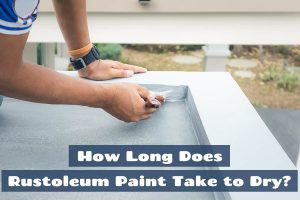If you’ve ever had wood stairs, then you must know how essential it is to use a finish to protect and beautify the stair’s surface. Without a finish, your wood stairs would quickly deteriorate, cracking at the most unexpected places.
They would get stained or damaged by liquid, and worse; their appearance would be unattractive. For these reasons, most people who have wooden stairs would always easily decide to use a finish on their stairs.
The hard part is choosing the particular finish to use on your wood stairs. There are dozens of finish brands available in the market, but no one finish is perfect for all situations.
A quick visit to the paint department of your local store will reveal options like tung oil, polyurethane, mineral oil, shellac, lacquer, wax, varnish, linseed oil, etc., to mention a few.
The sheer volume of varieties and options would be your biggest challenge in getting the best finish that would not only protect your stairs from damage but have them looking good too.
It’s been said that wood finishing is perhaps the most difficult step in any wood project, generally because of all the options available. In this article, we’ll go over your wood stairs finishing options to make the job a lot less complex for you.
Types of Finishes for Wood Stairs
The hundreds of options in brands of wood finishes can still broadly be categorized into two types: penetrating finishes (the kind of finishing that dries up inside the wood) and surface finishes (the kind of finishing that dries up on the surface of the wood).
Surface Finishes are plain and extremely durable finishes, and most importantly, they are practically maintenance-free. As their name implies, surface finishes are applied on wood surfaces, leaving a natural look to the exterior.
Surface finishes will enhance the color and grain of your wood stairs; they would also add some warmth and depth to their appearance.
Some examples of surface finishes are polyurethane, varnish, lacquer, and shellac. Some surface finishes, such as polyurethane, are highly durable, offer excellent protection for wood stairs, and require very little maintenance.
Penetrating Finishes are mainly oil. As the name implies, these finishes infiltrate the wood grain instead of settling on the surface as the surface finish does. They leave no surface film or coating, just a beautiful low-luster finish. These kinds of finishes require a lot more maintenance than surface finishes.
What Is the Best Finish for Wood Stairs?
Polyurethane
For surface-type finishes, polyurethane stands out among the dozens of other options, and the reasons for this are not far-fetched. Stairs often have to accommodate a lot of human traffic daily, and quick wear and tear would be inevitable unless there is a hard, durable layer of protection.
Nothing could get through to your wood if there is a coat of polyurethane around it, as it offers a durable, hard coat.
Despite all its pros, polyurethane does have some cons. For one, even though you do not need to reapply often, when you do need to reapply, you’ll first have to scrub off every inch of the old application by sanding down the stairs thoroughly.
This takes a lot of time. Furthermore, polyurethane, like other surface finishes, can also cover up the natural beauty of your wooden stairs.
Tung Oil
Another popular finish for wood stairs is Tung oil- a penetrating finish. Even though Tung oil would not offer quite the same protection as polyurethane, it seeps right through the wood, allowing the beauty of your wooden stairs to shine through.
Tung oil is also waterproof, durable to an extent, mold-proof, and doesn’t go rancid. It dries faster than other oil, making the application process a lot more stress-free.
From an aesthetic standpoint, tung oil leaves a natural matte finish, perfect for anyone who wants that antique or country-style staircase. It soaks right into the wood and protects its integrity.
One con to Tung oil is that it needs constant maintenance. Additionally, with Tung oil, you have to take specific care while cleaning, as most cleaning products are made to break down oil. Since you don’t want to break down the oil on your stairs, make sure you use a PH-neutral cleaner every time you clean.
Can I Use Polyurethane over Stain?
Yes, you can. Sometimes after staining your wood stairs for aesthetics, you would realize your stairs still need a lot of protection from heavy foot traffic. Feel free to use some coats of polyurethane over the stain.
Polyurethane not only protects but also gives your stairs an easy-to-clean glossy sheen. As a rule of thumb, you should wait for your stain to dry before applying polyurethane.
Drying times can differ for different products, so refer to the manufacturer’s instructions for any product you use.
If you apply the polyurethane before your stain is sufficiently dry, you’ll end up mixing up your poly and stain, which would take forever to dry or, worse, reduce the bonding of the polyurethane, which would ruin your finish over time.
Bear in mind that there are factors that could affect drying times, such as temperature, humidity, and circulation.
To be extra safe, wait 72 hours to account for any extenuating circumstances. Remember to use a compatible finish for stain and polyurethane; for instance, use an oil-based stain with an oil-based polyurethane.
What Is the Best Polyurethane for Wood Stairs?
There are tons of inferior-grade polyurethane available in the market, so do your research to find a brand known for durability and longevity. Most of the time, if the price of the product is too good to be true, then the product would most likely turn out to be inferior.
What Is the Hardest Polyurethane Finish?
If you have some really heavy foot traffic running through your stairs daily and you are looking for the hardest polyurethane you can find out there, then you should go for the oil-based polyurethane brands as they are a lot tougher than the water-based ones.
Water-based polyurethanes, though easier to work with, offer a lot less protection than oil-based ones. For an extra hard result, you could also try coating your stairs with several coats of Lacquer; Lacquer often offers a hard and durable protective finish that resists wear and tear.
How Many Coats of Polyurethane Do I Need for Oak Stairs?
In general, you would need three coats of polyurethane for the best longevity. On the other hand, if you plan to have a carpet run through your stairs after application, then you should be able to get away with two coats.
What Is the Best Applicator for Polyurethane?
For this, you should also refer to the manufacturer’s instructions for the particular product you’re using.
How Do You Make Wood Stairs Not Slippery?
The smooth polished surface of hardwoods can make them quite slippery on stairs.
To make sure no one slips and breaks a hip, you should add some traction to the wood. This can be achieved in several ways. For one, you could coat the floor with an anti-slip finish.
Alternatively, you could install a carpet over the stairs or use anti-slip adhesive stair treads to make your stairs rougher and considerably lessen the risk of slipping.
Stair safety is a topic that can’t be avoided while working on your stairs, and an anti-slip finish is a very important part of this topic. Anti-slip finishes are specifically designed to remove unnecessary risks and improve safety.
Failure to use an anti-slip finish on your wood stairs can be a safety hazard due to the risk of people falling and seriously injuring themselves. So whether you are working on a residential or commercial property, it is important to make sure you use an anti-slip finish.
The benefits of this cannot be over-emphasized as it helps people avoid needless litigation by preventing injuries that could have been avoided.
How to Apply Wood Finish on Stairs
When applying finish to your stairs, the smoothness and cleanness of your surface before the application would determine the results. When you are working with clear finishes like polyurethane, your stairs would have to be even extra clean before application.
Try using sandpaper to sand off any form of the roughness of the wood’s surface and create an extra-smooth surface. When this is done, you must clean the wood meticulously to eliminate all sanding dust. You can do this by using a vacuum and a tack cloth, a wet rag, or cheesecloth.
When working with polyurethane, never shake the can. If you do, you create several bubbles that will be visible on your final finish. Rather than shake, gently stir the poly before each use. During application, ensure that the area is well-ventilated, as the product gives off strong fumes.
When you’re done with each coat of polyurethane, use a bright light to check your work closely for brush marks, bubbles, missed spots, and bumps. You’ll have to fix these imperfections while the application is still wet, or else it will be too late to fix them.
The application process for Tung oil is simple; coat the oil on the stairs, wipe away the excess, then give it time to dry.







